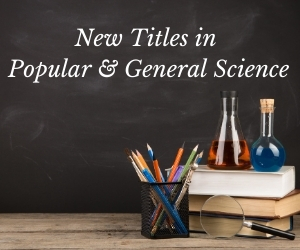This book enables STEMM researchers to write effective papers for publication as well as other research-related texts such as a doctoral thesis, technical report, or conference abstract.
Science Research Writing uses a reverse-engineering approach to writing developed from extensive work with STEMM researchers at Imperial College London. This approach unpacks current models of STEMM research writing and helps writers to generate the writing tools needed to operate those models effectively in their own field. The reverse-engineering approach also ensures that writers develop future-proof strategies that will evolve alongside the coming changes in research communication platforms.
The Second Edition has been extensively revised and updated to represent current practice and focuses on the writing needs of both early-stage doctoral STEMM researchers and experienced professional researchers at the highest level, whether or not they are native speakers of English. The book retains the practical, user-friendly format of the First Edition, and now contains seven units that deal separately with the components of written STEMM research communication: Introduction, Methods, Results, Discussion, Conclusion, Abstract and Title, as well as extensive FAQ responses and a new Checklist and Tips section. Each unit analyses extracts from recent published STEMM journal papers to enable researchers to discover not only what to write, but, crucially, how to write it.
The global nature of science research requires fast, accurate communication of highly complex information that can be understood by all participants. Like the First Edition, the Second Edition is intended as a fast, do-it-yourself guide to make both the process and the product of STEMM research writing more effective.
Related Link(s)
Request Inspection Copy
Errata(s)
Errata (1 MB)
Sample Chapter(s)
Preface to the Second Edition
Introduction
Contents:
- Acknowledgements
- Preface to the Second Edition
- Introduction
- How to Write the Introduction
- How to Write about Methods
- How to Write about Results
- How to Write the Discussion
- How to Write the Conclusion
- Writing the Abstract
- Writing the Title
- Checklist and Tips
- Sources and Credits
- Appendix A: Prefixes Used in Science Writing
- Appendix B: Research Verbs
- Writing Skills Index
- Language Index
Readership: Both native and non-native speakers of English including science writers, postgraduate students, researchers and teachers.
"This book should be on every STEMM academic's bookshelf. In an academic world concerned with the quantity and quality of scientific publishing, this new edition of Science Research Writing is essential and timely. Writing enthusiastically and clearly, Glasman-Deal forensically deconstructs published texts to generate a series of robust, flexible models that help make writing less daunting. The content, tone, and language choice required to guide the reader through the main building blocks of STEMM writing (i.e. Abstract, Introduction, Methods, Results, Discussion, Conclusions) are clearly outlined; this helps the author communicate the intended meaning of every sentence, paragraph and section, clearly and unambiguously. This book is essential reading for academics at all experience levels; it will not only benefit students taking their first steps into scientific writing but also publishing 'veterans' who are still looking for ways to improve their skills."
Professor Christopher Jackson
Equinor Professor of Basin Analysis
Imperial College London
"Science Research Writing is an accessible, insightful guide for those who are writing science research for publication, based on the author's extensive experience supporting science researchers to write more effective research papers. A key point of difference is that this guide focuses not only on what to do in writing the different sections of a research article or dissertation, but, crucially, how to do what is required and why. This timely book offers an informative model and practical tools for science research writing. As well as providing an enormously useful approach to areas that often seem opaque to novice writers, it also supplies a depth of analysis and practical support that will engage experienced STEMM researchers. It will be highly valued by science writers, postgraduate students, researchers and teachers for its lucid approach to science research writing and as a resource for researchers to communicate their work effectively and coherently."
Professor Cynthia White
Pro-Vice-Chancellor, Massey University
"The book is also really well written, which should come as no surprise considering the topic, but cannot be taken for granted — I've read scientific writing books that were lengthy and self-indulgent. So, I was pleased to find that Science Research Writing is a smooth read with no annoying fluff … This book would be useful for researchers at the start of their scientific writing career who would like to produce a clearly written paper with a good chance to be published."
Dr Anna Clemens
Scientists Who Write

Hilary Glasman-Deal teaches academic STEMM communication at Imperial College London. Her primary focus is on research writing for native and non-native speaking doctoral students, postdocs and academic staff. She consults on scientific research publication at the highest level in all areas of STEMM, working with researchers to communicate complex content effectively across a range of fast-changing communication platforms. Hilary also delivers workshops and short courses on writing for journal publication around the world.



























